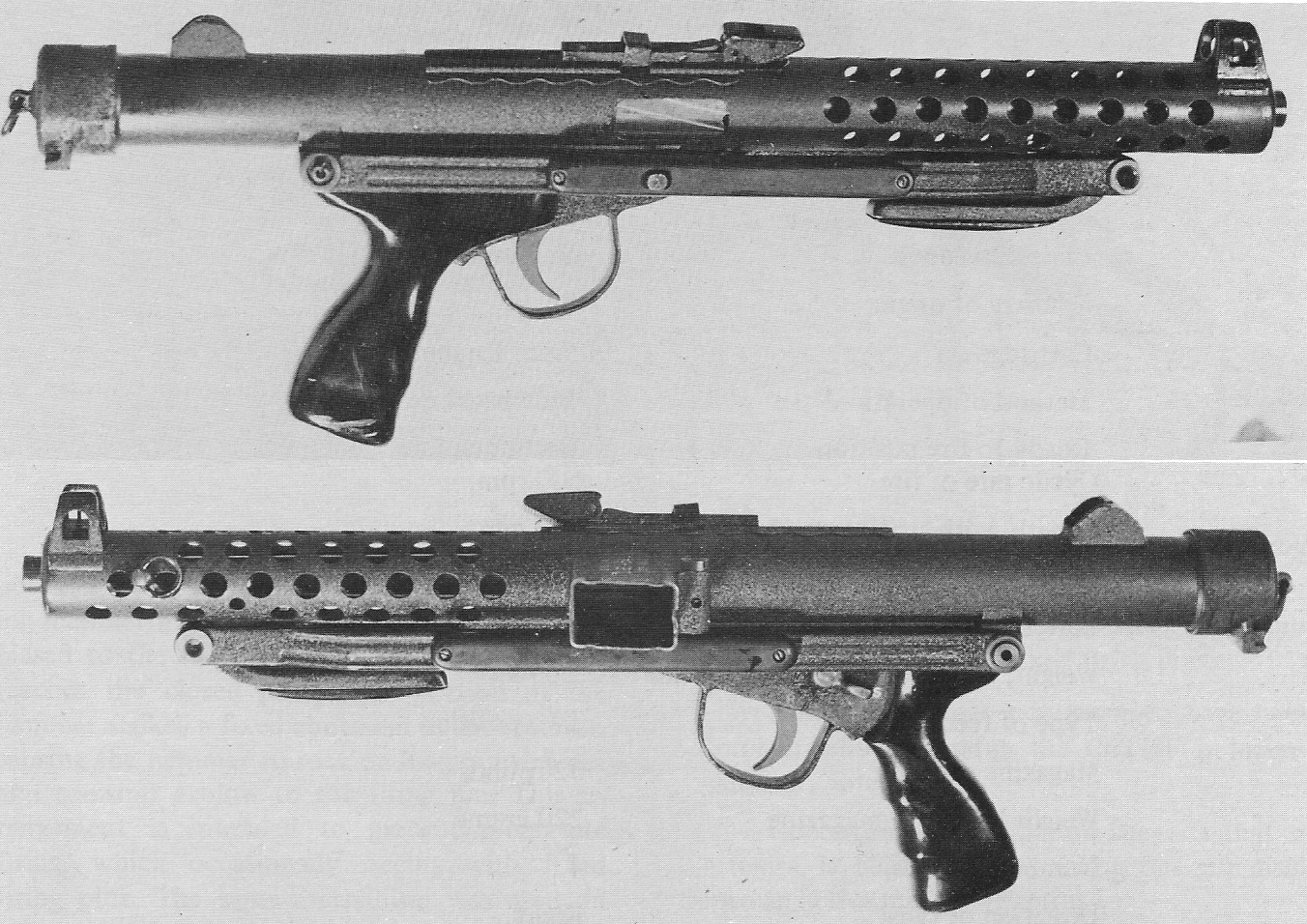In the early 1960s the state-operated CETME
arsenal (
Centro de Estudios Tecnicos de
Materiales Especiales) in Spain began development of a submachine
gun. The lead designer on this project was the former director of the
Coruña arsenal, Joaquin de la Calzada de Bayo. An early prototype was
conceived in 1961 and was known as the CB-61 (
Calzada Bayo).
The design of this gun was clearly derived from the British Sterling
submachine gun, using a similar trigger group and tubular receiver with
perforations around the barrel. However on the CB-61, the magazine feed
was vertical.
 The CETME CB-61 prototype with vertical
magazine feed
The CETME CB-61 prototype with vertical
magazine feed (Photo: Barcelo Rubi)
Over the next few years the design was further refined and by the
mid-1960s it was known as the CB-64. This was largely the same gun but
with various detail changes, such as the relocation of the magazine feed
to a horizontal position, as per the Sterling, and the slight changes to
the sights and position of the cocking slot. The bolt on the CB-64 used a
loose, spring-loaded firing pin engaged by a separate hammer, and fired
from an open bolt position. The gun is chambered in both 9x23mm Largo, the
standard Spanish pistol cartridge, and 9x19mm Parabellum, without the need
to swap many components as the two cartridges are dimensionally similar.
The cocking handle on the CB-64 is also built onto a rectangular dust
cover, which conceals the cocking slot.
The end product is largely indistinguishable from the original Sterling
submachine gun, but internally the CB-64 does include an interesting
feature not present on the Sterling. A common hazard of open-bolt SMGs if
that when the bolt is in the retracted position, i.e. cocked and ready to
fire, dropping the gun can cause the bolt to come loose and fly forward,
resulting in an accidental discharge which can prove fatal, and indeed has
in many cases. Mr. Calzada de Bayo built the CB-64 with a failsafe
mechanism that prevents the bolt from coming forward unless the trigger is
actually pulled. This is achieved by fitting the trigger sear with an
extension that engages a catch in the bolt path. The catch interrupts the
bolt path and prevents the bolt from coming forward, but does not prevent
the bolt from coming back (i.e. cocking). Only by deliberately pressing
down the trigger and fully engaging the sear does the catch come down and
open the bolt path.
 The CETME CB-64's failsafe safety catch.
The CETME CB-64's failsafe safety catch.
The CB-64 was offered for domestic and export sale in the 1960s under the
name "CETME C2". However it did not sell particularly well and was
discontinued by the mid-1970s. There were apparently plans to reintroduce
it to CETME's sales line at the end of the 70s but this amounted to
nothing.







